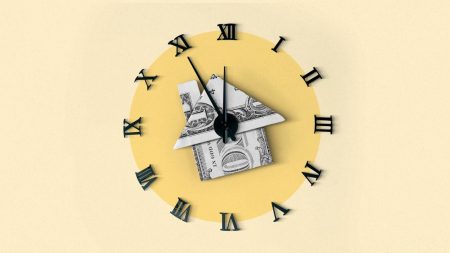JGI/Jamie Grill/Getty Images
Key takeaways
- Deferment can temporarily pause your loan payments while keeping your accounts current and protecting your credit health.
- Deferment and forbearance are used interchangeably for personal loans.
- Lenders usually ask for proof of financial hardship to approve you for loan deferment.
- While payments aren’t required, interest may continue to accrue, resulting in higher payments when deferment ends.
- Weigh the pros and cons and explore alternatives before moving forward.
Deferment is an option that allows you to temporarily pause your loan payments with the lender’s approval during times of financial hardship. Deferring your payments can help keep your accounts in good standing while you get back on your feet, but it’s just a short-term solution.
What’s more, this option isn’t guaranteed for everyone because the outcome will depend on the lender, making it necessary to meet certain criteria. Otherwise, you might need to find alternative options.

Best personal loans of 2025
Explore Bankrate’s top picks for the best personal loans to find the right lender for you.
Learn more
How does personal loan deferment work?
Deferment is typically available for installment loans, such as personal loans, student loans, auto loans and mortgages. Personal loan deferment allows borrowers to postpone payments without impacting their credit score or loan agreement. The deferment period can range from one month to several months, depending on the lender.
Interest and fees typically continue to accrue on the debt during deferment. Consequently, your monthly payment could increase once the deferral period ends. Deferring the loan also means you’ll end up paying interest over a longer period of time since any missed payments are typically added to the end of the loan.
Deferment does not affect credit score
Deferment is a tool to keep your loan account in good standing while experiencing hardship. Your credit won’t be negatively impacted just because your loan is in deferment. On the other hand, if you stop making payments before your request is approved, your credit score may take a hit if the lender reports a late or missed payment.
Deferment vs. forbearance: What’s the difference for personal loans?
These terms are used interchangeably by lenders. Both let you pause personal loan payments for a set period, and you can expect the missed payments to be added to the end of the loan term.
Eligibility for personal loan deferment
You may qualify for personal loan deferment if you’re experiencing economic hardship due to:
- A reduction in hours
- A job loss
- A medical emergency
- A life-changing event
That said, you could denied for deferment if you cannot provide written proof of your situation or change in financial position to the lender.
How to request personal loan deferment
- Contact your lender: The first step is reaching out to your lender and explaining your situation. Sharing your circumstances helps a lender understand your need for a deferment.
- Submit proof of your circumstances: Typically, lenders will require some form of proof regarding your change in circumstances. This could include confirmation that you’ve qualified for unemployment payments or some other form of relevant documentation.
- Wait for the lender’s decision: If your request is approved, you’ll get a letter stating the terms of your payment deferral, including details on interest accrual and when your next payment will be due. In the meantime, remember to keep making payments to avoid fees and other negative consequences.
Personal loan deferment: Pros and cons
Pros
- Pauses monthly loan payments
- Protects your credit score
- Frees up funds
- Helps prevent default
Cons
- Extends loan term
- Increases borrowing costs
- Approval not guaranteed
- Brief approval period
5 Things to consider before seeking a personal loan deferment
- A personal loan deferment isn’t a quick fix.
- You will pay more in interest over the loan term.
- You should read the fine print before deciding.
- Get professional help.
- Look at other options.
7 Alternatives to a personal loan deferment
While deferment can be a good option for some during financial hardship, there are other ways to make your loan payments more manageable:
1. Loan modification
Some lenders allow you to modify the terms of your loan to lower your monthly payment. This is typically done by extending the length of your repayment term. This can result in more interest paid over the life of the loan, but it can be a good way to reduce your monthly payment if you aren’t sure when you’ll be back on solid financial footing.
2. Refinancing
By refinancing your loans, you’re essentially taking out a new loan with new terms and interest rates to pay off your old one. You can refinance your loans separately or combine multiple loans — and other forms of credit —with a debt consolidation loan.
This can lower your monthly payment by extending your repayment term or securing a lower interest rate. However, for this to work, you’ll need a strong credit score and a stable source of income. Otherwise, it may not be worth your while.
3. Credit counseling
If you’re deep in debt and don’t know the best payment management option, consider contacting a credit counseling agency. These organizations help consumers come up with a plan to tackle debt effectively based on their finances. Most of the time, you can access these services for a nominal fee or even for free, depending on the agency.
4. Consolidate your debt
If you have a solid credit score, a debt consolidation loan could also work. You can use it to pay off all your debt balances using the loan proceeds. This strategy streamlines the repayment process by allowing you to manage all of your loans through a single monthly payment.
Keep in mind:
This option is best if you qualify for a rate that’s lower than what you currently have on all your debts.
5. Hardship programs through lender
Some lenders feature hardship programs that reduce your loan payments or reduce fees for a certain period. It’s worth asking if any of these options are available before requesting a deferment. In some instances, you could be approved for a hardship program without providing any supporting documentation.
6. Local programs
Call 2-1-1 to learn more about programs in your area that may lend financial support to those in need. Depending on your circumstances, you could qualify to have your basic necessities covered, which might help you free up room in your budget to get back on track.
7. Ask friends or family members for assistance
Reach out to a friend or relative you trust and ask for a small loan. If they agree, draft up an agreement that’s realistic and works for both parties. It’s equally important to uphold your end of the bargain to preserve the relationship.
Bottom line
Personal loan deferment lets you keep your account current while temporarily pausing your payments. It can be an effective personal loan management strategy if you need a short break from payments.
That said, this is a short-term solution designed to help you during a time of financial need. If you see your situation lasting more than a couple of months, loan modification, refinancing or working with a credit counselor may be a better fit.
Read the full article here












